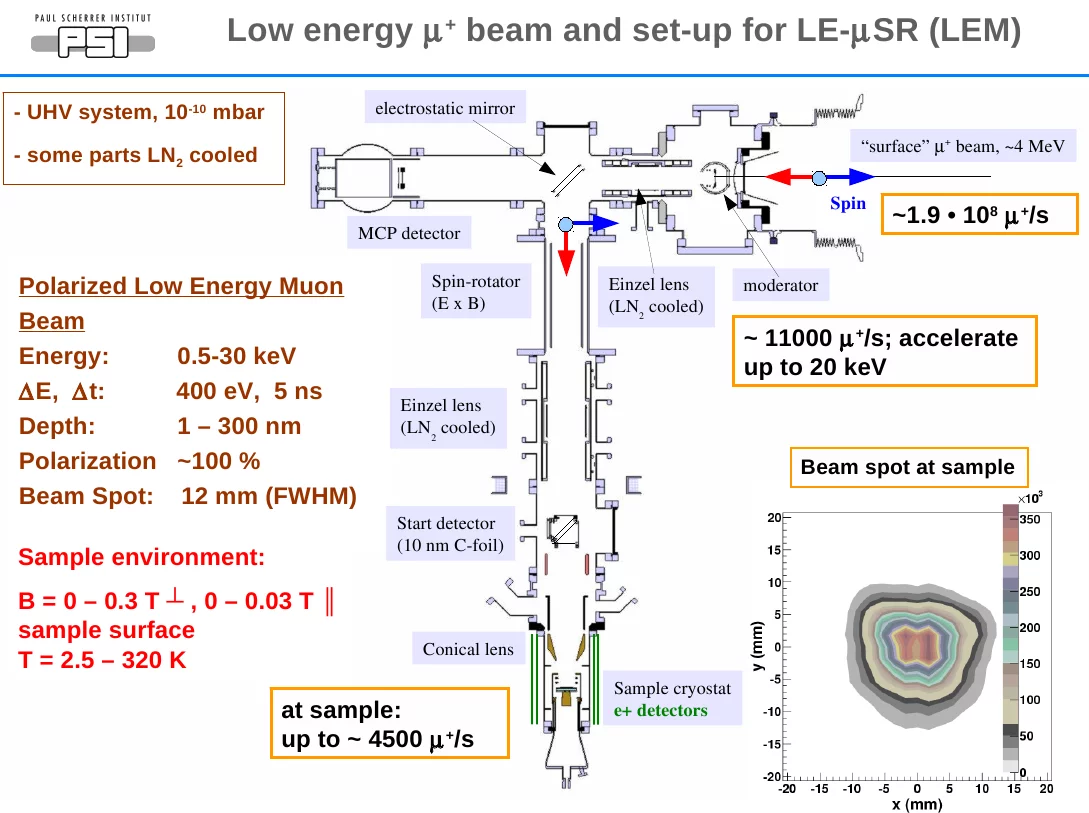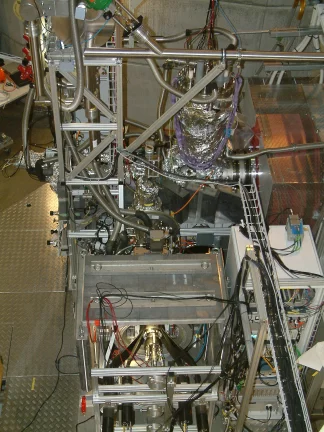The 4-MeV surface muon beam passes an appropriate moderator consisting of a thin layer (a few 100 nanometer) of a van der Waals bound rare gas solid or solid nitrogen deposited on the downstream side of a 125-µm silver subtrate. The substrate is cooled down to ~10 K by a helium cryostat. An UHV environment is needed to avoid any uncontrolled deposition on the moderation target which would cause a decrease of the moderation efficency. A fraction of incoming muons yields very slow muons with a mean energy of about 15 eV. They are accelerated to energies up to 20 keV (low-energy muons) and then seperated by an electrostatic transport system from the dominant fraction of outcoming muons with a mean energy of about 500 keV. The low-energy muons are clearly identified by a time-of-flight (TOF) measurement between the start scintillator (beam counter) and the trigger detector. For optimizing the transport system settings a position sensitive micro-channel-plate detector (MCP2) is mounted at the sample position at the end of the transport system. The MCP2-detector is substituted by a sample cryostat or a sample heater when performing µSR investigations on thin films or multi-layer systems. The temperature range presently covers 2.5 - 570 K. Zero-, transverse- and longitudinal-field µSR measurements are possible with a maximum field of 0.34 T (WEW magnet, field applied along beam direction). Zero- and transverse-field µSR with a field applied parallel to the sample surface (AEW magnet, vertical magnetic field up to 0.03 T) are also possible. The sample is mounted electrically insulated on the cryostat in order to apply an acceleration or deceleration high voltage of up to +-12 kV to the sample. In this way the low-energy muons can be implanted with the full energy range between 0.5 and 30 keV. The positrons from the muons decaying in the sample are detected by 64 (WEW) or 32 (AEW) BC-400 scintillator segments surrounding the vacuum tube. Readout of the scintillators is achieved by APDs (avalanche photo detectors).

